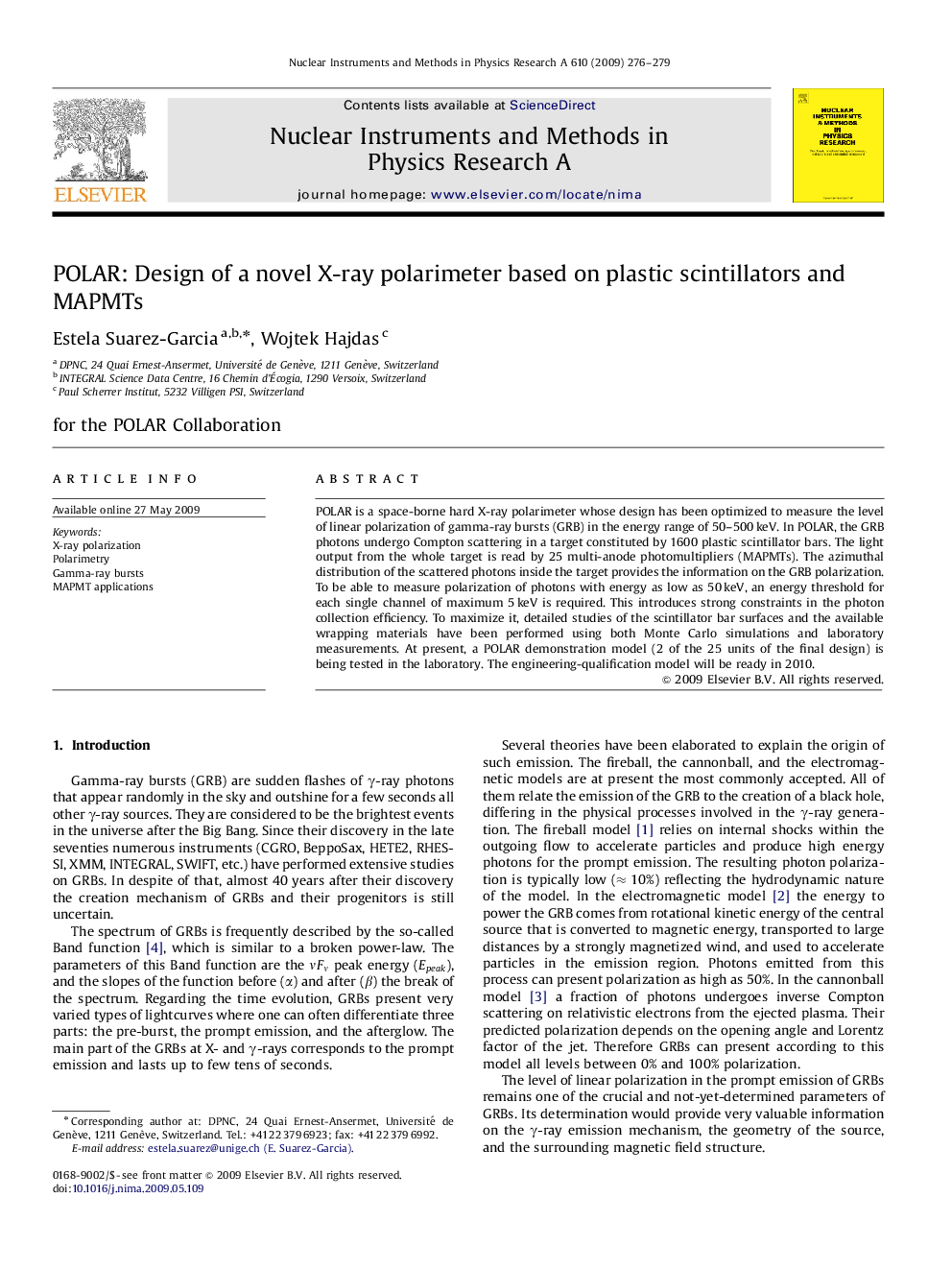| Article ID | Journal | Published Year | Pages | File Type |
|---|---|---|---|---|
| 1827626 | Nuclear Instruments and Methods in Physics Research Section A: Accelerators, Spectrometers, Detectors and Associated Equipment | 2009 | 4 Pages |
Abstract
POLAR is a space-borne hard X-ray polarimeter whose design has been optimized to measure the level of linear polarization of gamma-ray bursts (GRB) in the energy range of 50-500Â keV. In POLAR, the GRB photons undergo Compton scattering in a target constituted by 1600 plastic scintillator bars. The light output from the whole target is read by 25 multi-anode photomultipliers (MAPMTs). The azimuthal distribution of the scattered photons inside the target provides the information on the GRB polarization. To be able to measure polarization of photons with energy as low as 50Â keV, an energy threshold for each single channel of maximum 5Â keV is required. This introduces strong constraints in the photon collection efficiency. To maximize it, detailed studies of the scintillator bar surfaces and the available wrapping materials have been performed using both Monte Carlo simulations and laboratory measurements. At present, a POLAR demonstration model (2 of the 25 units of the final design) is being tested in the laboratory. The engineering-qualification model will be ready in 2010.
Related Topics
Physical Sciences and Engineering
Physics and Astronomy
Instrumentation
Authors
Estela Suarez-Garcia, Wojtek Hajdas, for the POLAR Collaboration for the POLAR Collaboration,
